Today I did some cleanup in my work area (vacuuming, organizing, etc) in preparation for a new project I’ve been thinking about doing for the past several months. I’m going to make a small (approximately 6″x6″) version of the South Carolina flag. Yesterday I went through my glass and selected some blue for the background, then cut it into squares. I also printed out some pictures of the flag I’ve used for past projects in the right size and laid things out.
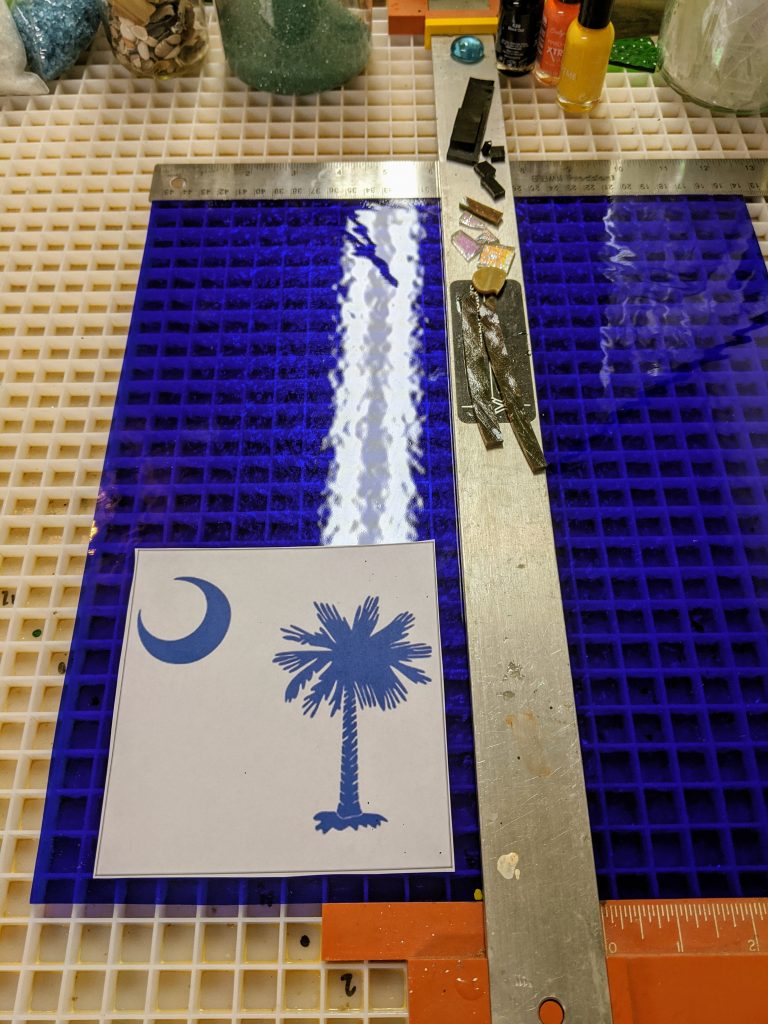
I was able to cut four squares, between 5-6.5″ each, from this one sheet of glass. Then I traced the outline of the Palmetto tree and crescent onto the background piece. Next I used my mosaic nippers to cut a large selection of tiny pieces of white glass from some scrap glass I have on hand. Then I set about arranging them into the image.
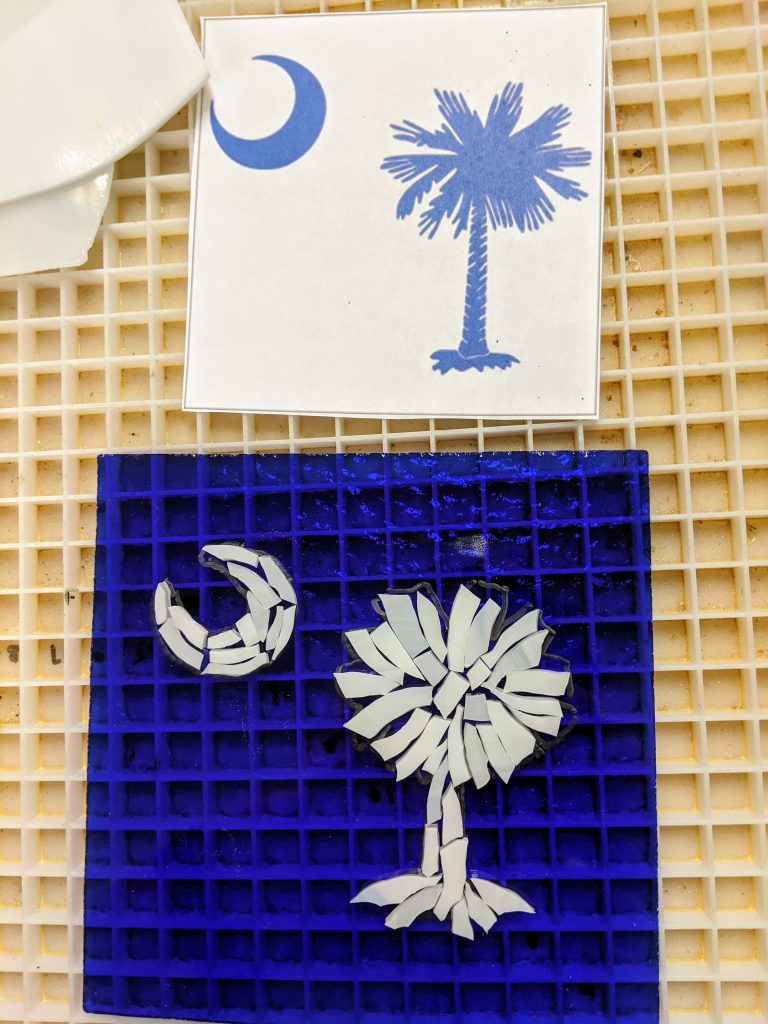
Somehow this didn’t look the way I had envisioned. In the past, I’ve used my glass saw to make the Palmetto and crescent for other mosaics. Looking around my work area, I wondered why I haven’t been using my saw for the past few years. I basically have been using it as a surface on which to store my measuring cups and mix my resin. So I decided to move all of that aside and clean up my old saw. At one point I was using it so often that I became pretty much an expert at repairing things when parts broke or wore out on the saw. I was a bit concerned that there was something broken because I haven’t used it in so long.
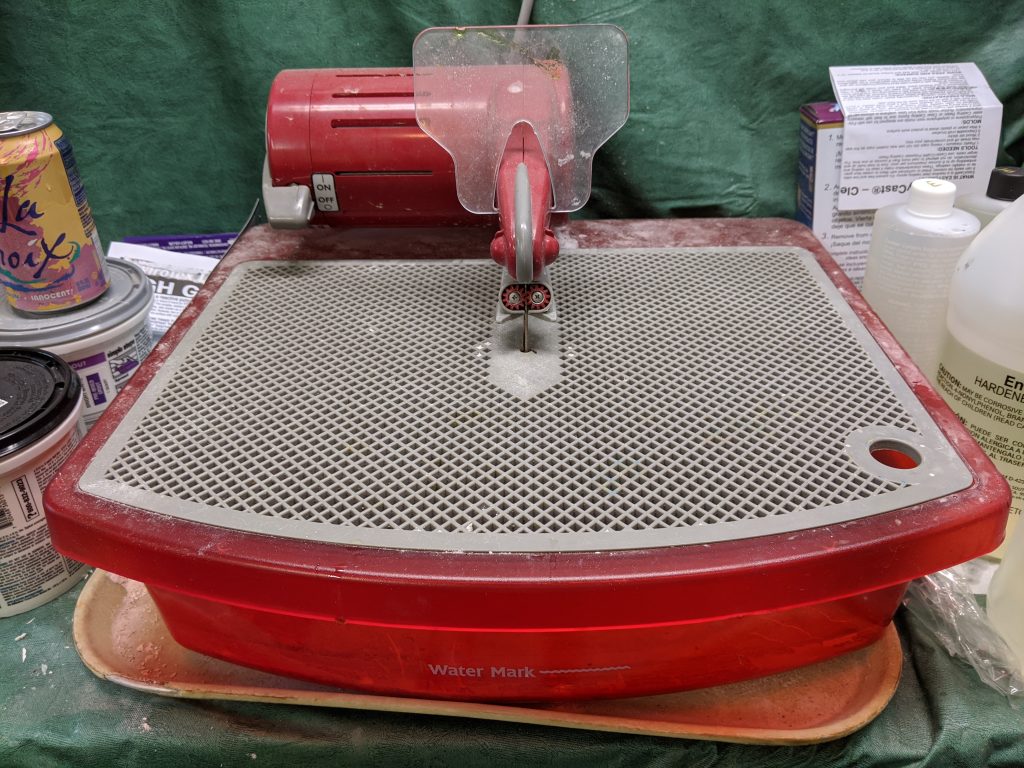
I cleaned it out and put some water in the basin and flipped the switch – hurrah! It worked! I then traced the pattern onto some scrap glass, cut it down a bit manually and added some mark stay over the lines I drew. Mark stay is basically a chapstick like substance that helps the lines stay in place while sawing (it is very wet and the marker lines wash away otherwise).
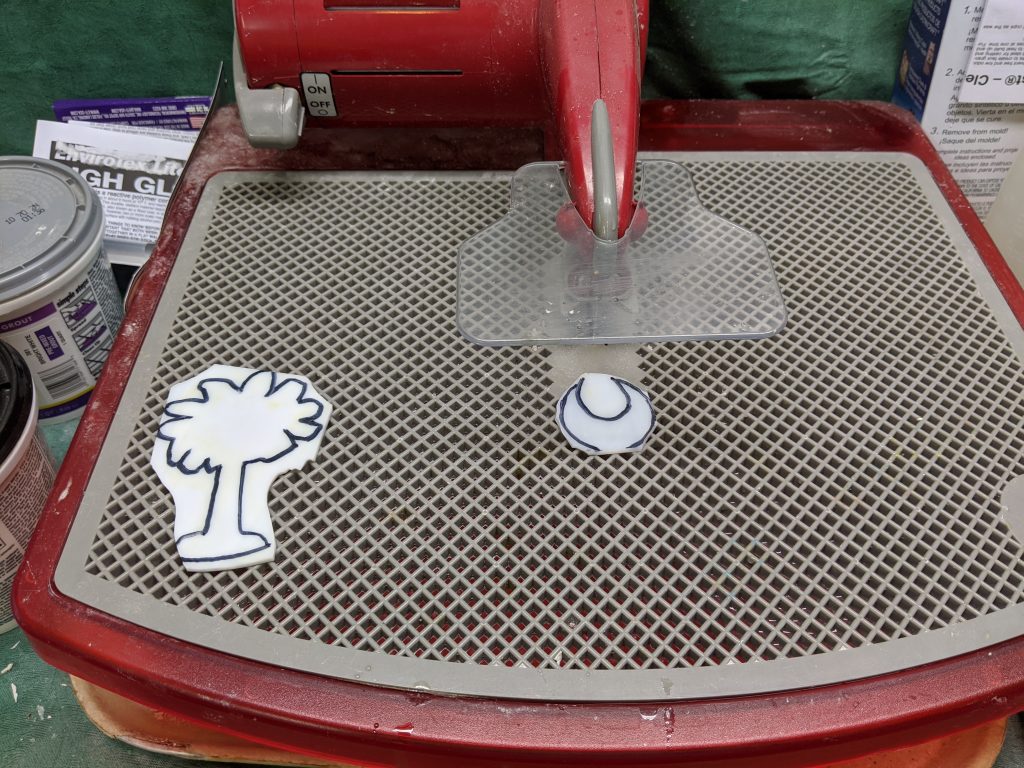
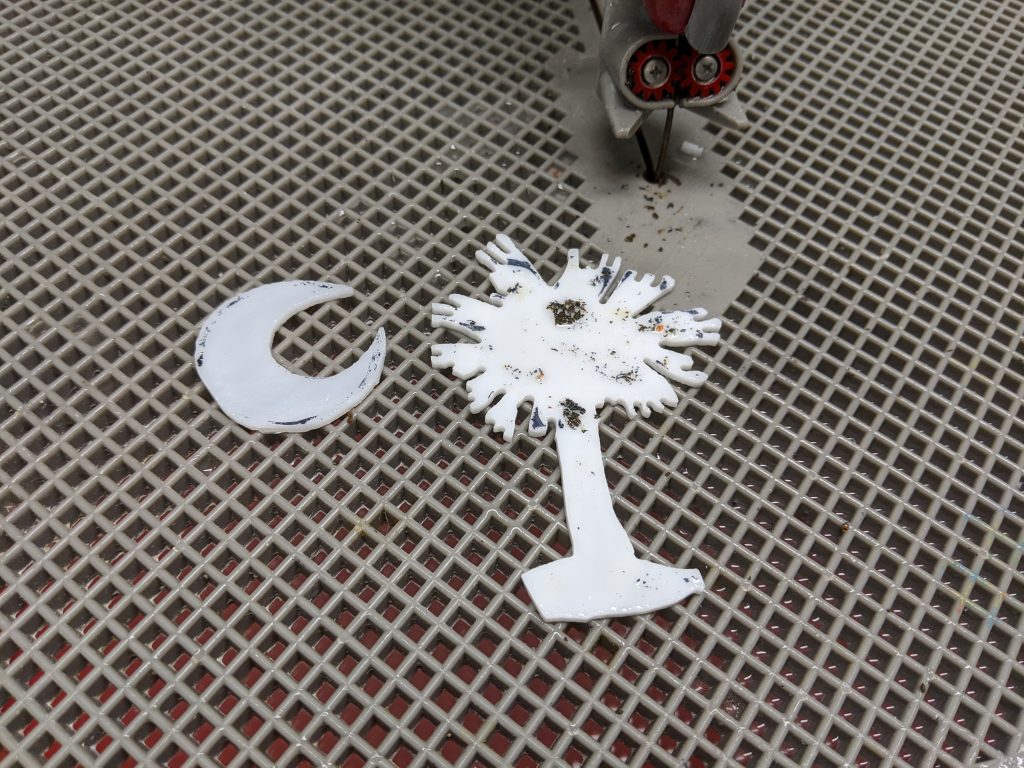
I cut out the basic outline and cleaned up the glass, then went for another pass to add some detail.
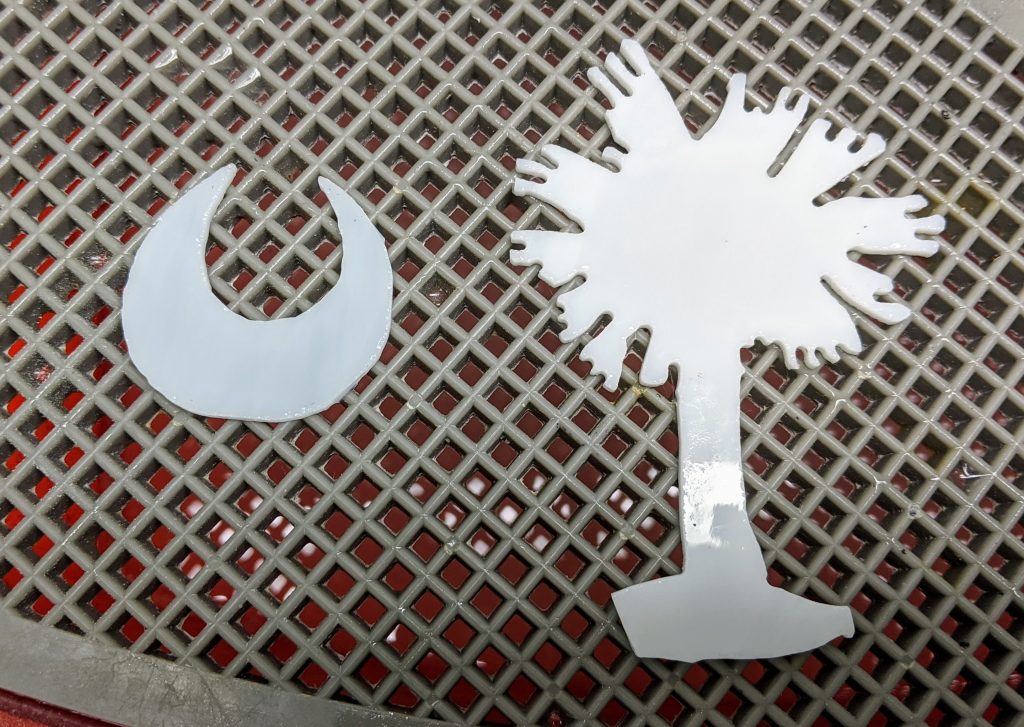
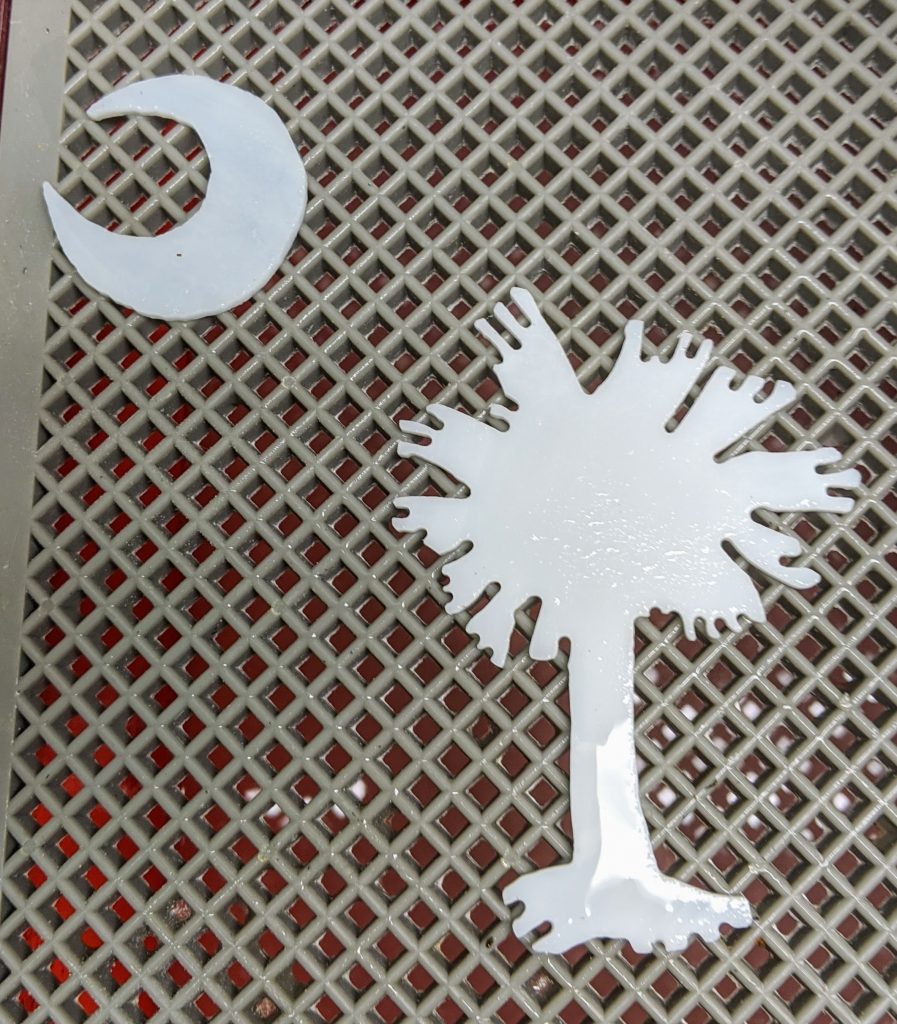
Then it was time to see how it looked on the blue background. I think I could make the crescent a bit skinnier.
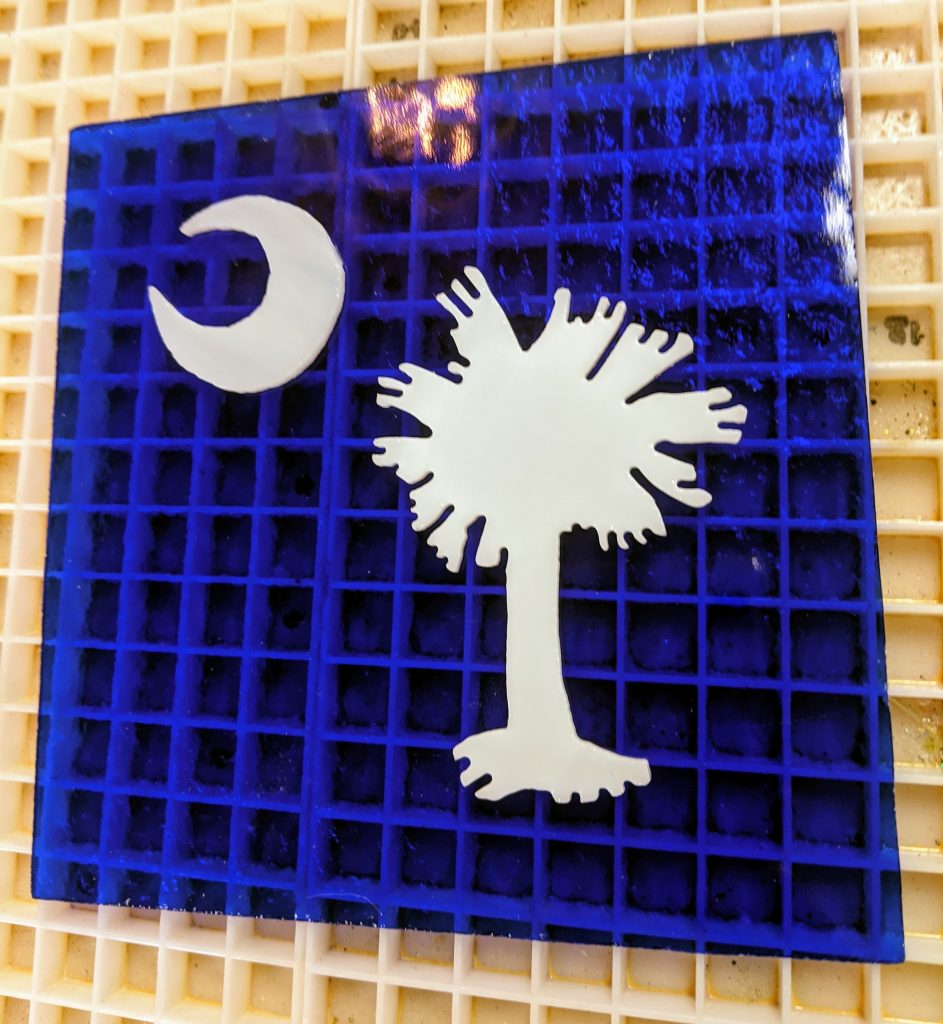
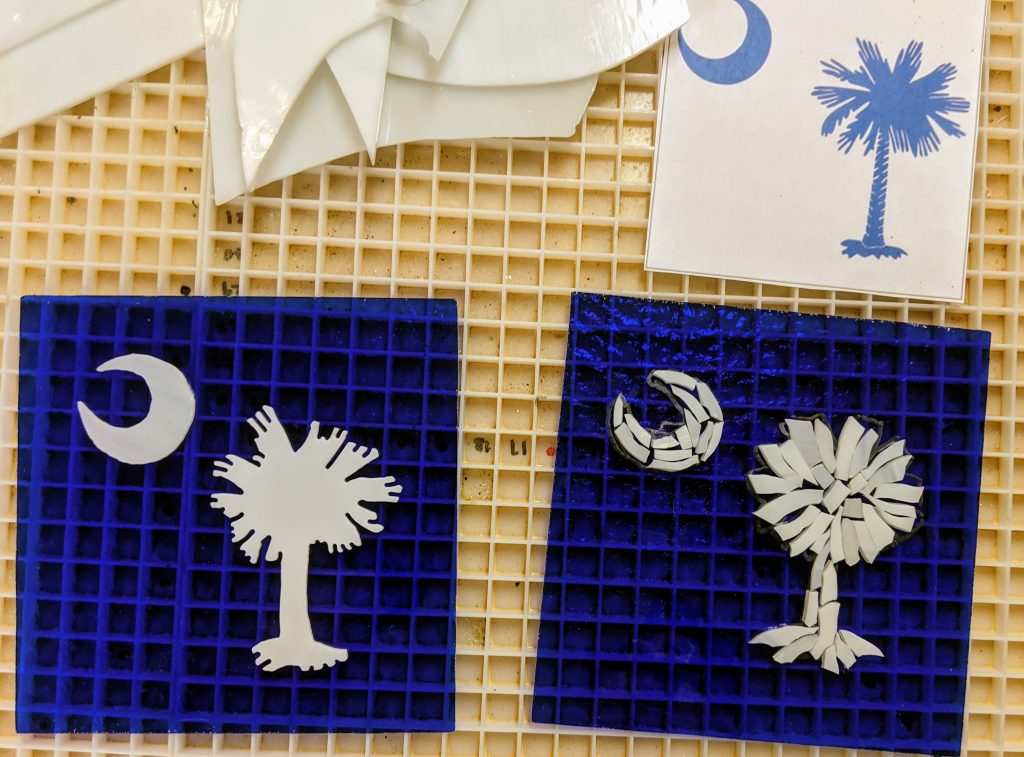
Which one do you like better? I still have to glue the pieces in place, then pour and embellish the resin coating. That will happen another day.
A note on the SC Flag – many who don’t know the history of the flag think that the crescent is a moon. It’s not. Here’s an excerpt from Wikipedia:
In 1775, Colonel William Moultrie was asked by the Revolutionary Council of Safety to design a flag for the South Carolina troops to use during the American Revolutionary War. Moultrie’s design had the blue of the militia’s uniforms and the crescent. It was first flown at Fort Johnson.[1] This flag was flown in the defense of a new fortress on Sullivan’s Island, when Moultrie faced off against a British fleet that had not lost a battle in a century.
However, there is much debate about the significance of the crescent. In his memoirs, Colonel William Moultrie tells us: “A little time after we were in possession of Fort Johnson, it was thought necessary to have a flag for the purpose of signals: (as there was no national or state flag at that time) I was desired by the council of safety to have one made, upon which, as the state troops were clothed in blue, and the fort was garrisoned by the first and second regiments, who wore a silver crescent on the front of their caps; I had a large blue flag made with a crescent in the dexter corner, to be in uniform with the troops …” In the 16-hour battle on June 28, 1776, the flag was shot down, but Sergeant William Jasper ran out into the open, raising it and rallying the troops until it could be mounted again”. This gesture was so heroic, saving Charleston, South Carolina, from conquest for four years, that the flag came to be the symbol of the Revolution, and liberty, in the state and the new nation.
Soon popularly known as either the Liberty Flag or Moultrie Flag, it became the standard of the South Carolinian militia, and was presented in Charleston, by Major General Nathanael Greene, when that city was liberated at the end of the war. Greene described it as having been the first American flag to fly over the South.
